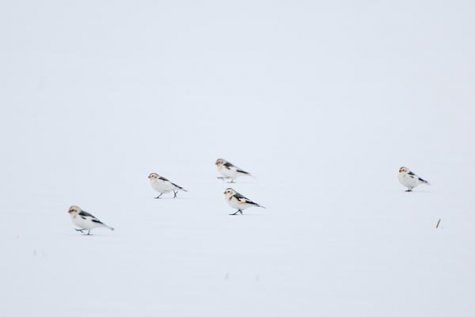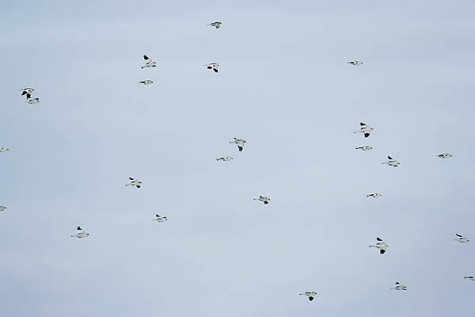Snow bunting groups
Photos: Arne Ader
Translation: Liis
Snow buntings
Snow bunting Hangelind Plectrophenax nivalis
Hangelind, “snowdrift bird”, is a nice and timely name, earlier they were also called lumetsiitsitajad, „snow twitterers“. An English everyday name is snowflake.
Winterers can seen, and very soon the passing migrants will appear, moving towards their Arctic high tundra breeding grounds. We are most likely to meet them in groups at their doings at roadsides and in fields – always on the snow cover (Arne’s photos are very characteristic). During the migration period they move in flocks of hundreds of individuals.
In the winter plumage the back is grey-brown-patterned, with beige patches on cheeks and wing knuckles (or carpal joint), for both male and female birds, but with more white on the wings of the male. The beak of the birds is yellow, with a black tip in winter. When there is a fresh and fluffy snow cover the birds spend cold nights in the snow.
They care for their bright plumage by bathing in the snow – many passerines do the same in water or snow.
Snow buntings










